The Festival of Nanda Devi Raj Jat
A three-week vacation dedicated to Dewi Parvati is traditionally held in the Chamoli district of Uttarakhand state in India. The pilgrimage involves the residents of Garhwal (western district of the country), and urban residents Almora, Begovel, Champawat, Pitoragarh and other parts of India. And they often join the inhabitants of neighboring countries.
The main festival is held at Nanda Devi Mountain, which is considered the ultimate sanctuary of the Goddess. And the holiday itself starts with a pilgrimage to the village of Nauta (around Karen Prayag), and leads to the top of the mountain - to Roopkund lake. Demand Dewi Nanda Devi runs through the village, where there is a temple dedicated to the goddess, and then stops for the night in Kochi, where she spends the night of worship and celebration.
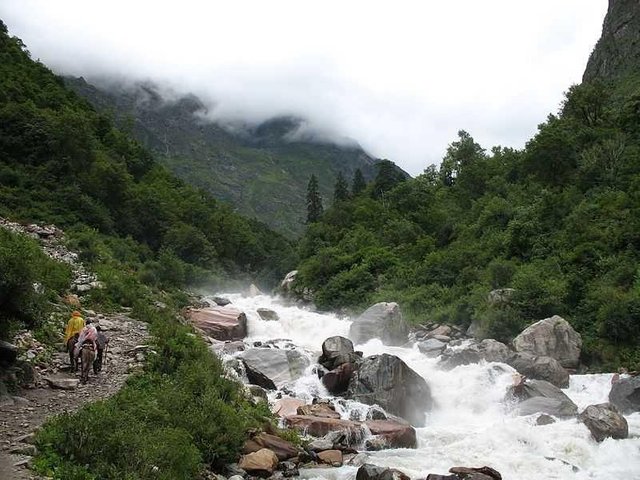
The religious festivities are accompanied by exhibitions, traditions formed under the reign of King Kalyan in the 16th century. Craftsmen from all the lines come to them. Agricultural products are also always represented there. Everywhere the festival is accompanied by singing and dancing, the cult of Nanda Davi, offers treats and flowers.
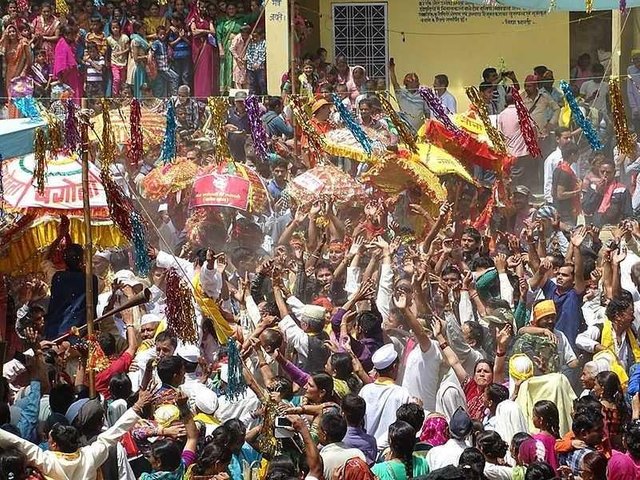
The traditional procession high in the mountains has a symbolic meaning. Legend tells that the couple Siva God, after leaving his village, continue the long journey to the top of Nanda Davi. Therefore, when the pilgrimage begins, it often rains: it is believed that at this time Davy himself cried.
This procession is very difficult because of the terrain, where the pilgrimage route passes. However, however, once in twelve years, the worshipers of the Parvati Goddess gather in this place to bow to him. And overcoming the difficult mountain roads, they, thus, show their devotion to the Goddess. After all, the name "Parvati" is translated as "Mountain", and she is the daughter of Lord Himata ruler.
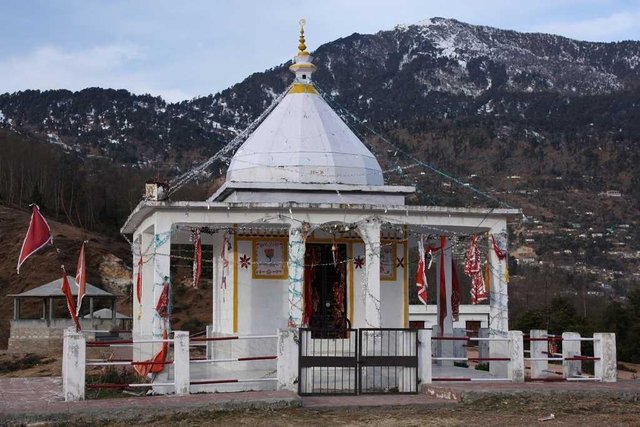
The elusive Lake Roopkund, the last pilgrimage point, is at an altitude of five thousand meters and looks like a small glacial lake formed by a melting glacier from the Himalayas. Most of the year Roopkund is covered with ice due to low temperatures in the mountains. The lake is also called the lake of the dead, because the history associated with this region, indeed, comes from the level of people who are passionate for the locals.
Talking about this horrible discovery on this lake began long ago - back in the XIX century. Then there was a rumor among the locals that the shores of the lake were literally filled with human and animal skeletons. In 1942, one man, Madhva, one of the local hunters, reached a hard-to-reach lake. He opened a horrible picture: on the edge of a cold lake lies the remains of no fewer than five hundred people, here there are scattered equipment and in some places preserved clothes. It was then assumed that these were the remnants of Muhammad Tughlak's army that attacked the Himalayas in the twentieth century. But after 10 years, Roopkund Lake was forced to talk about themselves again. The 1951 incident partially explains the question of who the men killed in the mountains.
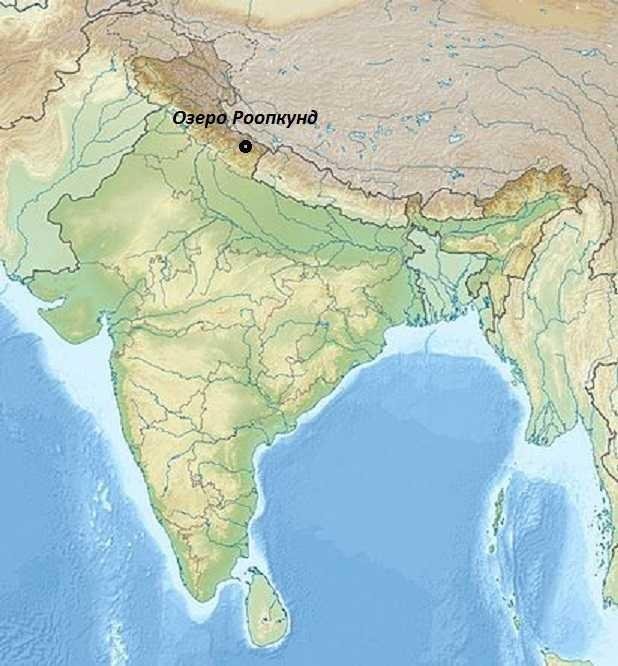
The fact is that even in the north, in the mountains, there is a sanctuary of pilgrims (supporters of the cult of Nanda-Devi) -Hokmun. And the road to this secluded spot lies along the shore of Lake Roopkund. But then, in the 50s, people got caught in a snowstorm, and they had to stop. People turned the tent and lit the fire to keep warm. As the layer of snow under the fires began to melt, a terrible finding appeared in the eyes of stunned travelers. The shocking news was immediately known throughout India.
The Himalayas - a place not only difficult to reach, but also very dangerous: here there is a sharp temperature change, a sudden snow storm, an avalanche, and a snowstorm. Therefore, one version of the mass death of a person is the death of an avalanche or a landslide.
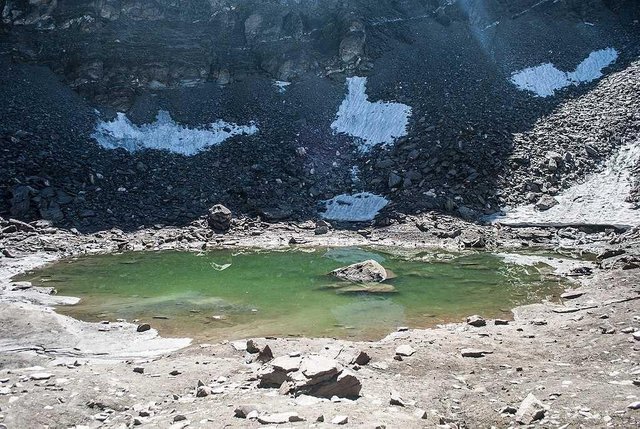
With the arrival of the new millennium, an improved method of studying the material received, as well as the dating of the body, has emerged. Oxford University conducted additional radiocarbon analyzes, setting the date of death of these men around 850 AD. e. (with a 30 year error).
Mitochondrial syndrome is studied in 82 human remains. The analysis confirms that the deceased belongs to a different genetic group: one closer to the population of Europe and the Middle East, and the other belonging to the Austro-Asiatic line of the northern Himalayas, which is composed of local populations. Apparently, a group of pilgrims came with a guide who knew these places well.
More study on the remnants allowed to make the assumption that people are in an anomalous state. Weather brings rain with unprecedented hail to 7 cm and weighs 400-500 grams, and they have no place to hide in the mountains. Most likely, here find their last refuge from the Brahmins of the Chipovan community of Maharashtra.
What they upset the mountain woman, whom she throws a "rock rain" over their heads, as local folklore tells us, we can only guess. No wonder the people who live here say: Woe to him who will scold the Goddess!
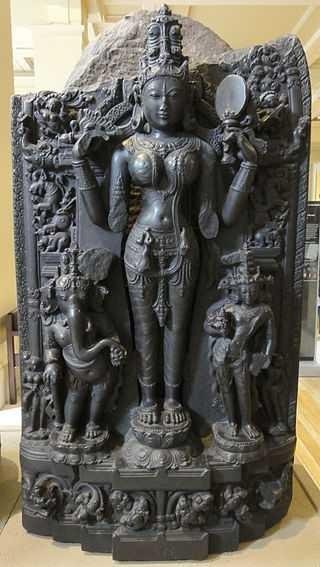
Today, as well as a few centuries ago, the cult worshipers of Dewi Parvati went to the Nanda Devi Raj Jat festival and made pilgrimages on an unthinking road, tackling hundreds of kilometers along mountain roads. The last celebration took place in 2014: then to the Lake Roopkund procession was submitted on August 18 and ended only on 6 September. The total distance of the pilgrim route is 290 km. where 230 km. the streets are on foot and only 60 km is covered by bus transportation.